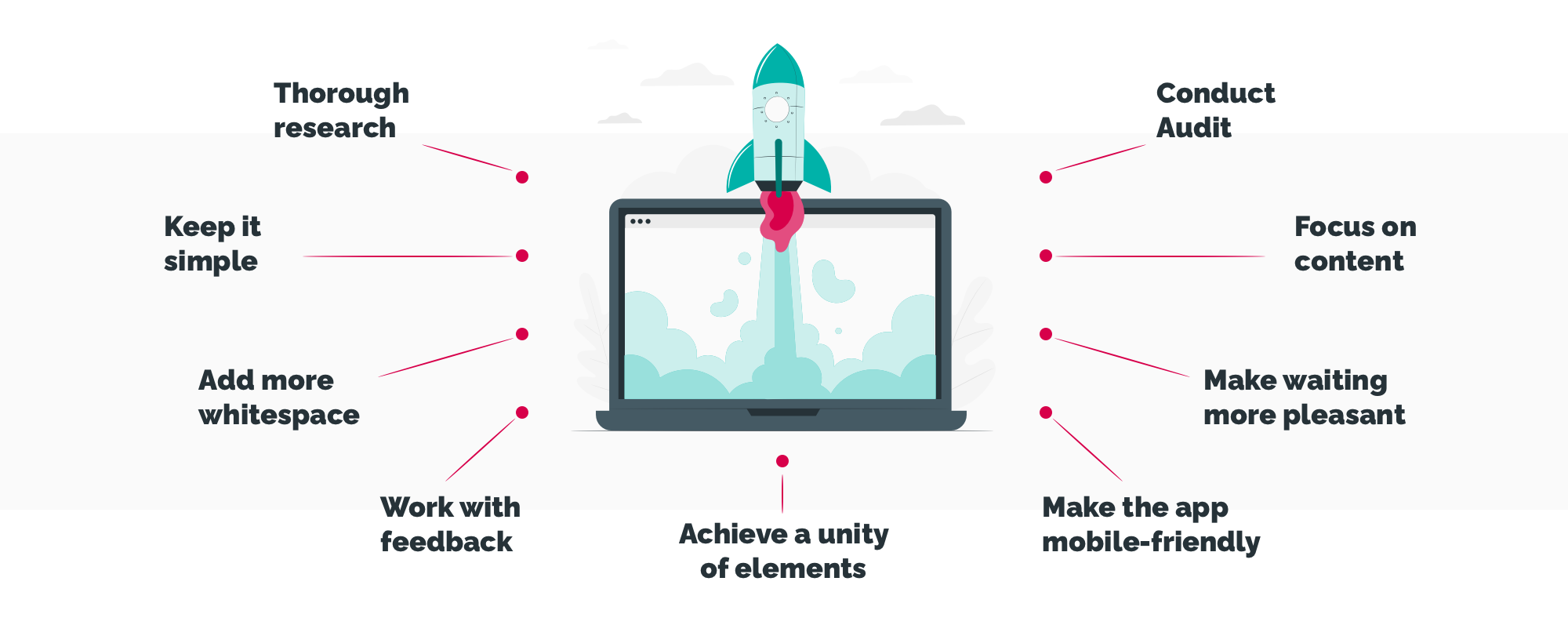


For instance, similar functionality should be accessed in similar ways in different parts of the application.

Simple and intuitive designs are more effective and pleasing to use.Īlong with simplicity, consistency is important in your interface designs to avoid confusing users. When users are presented with a convoluted interface or given too much to remember at once, it impedes their experience with the app and makes them less likely to return to it. Overly complex designs are a cardinal sin in modern UX practice. As with research, it can be tempting to skip certain aspects of a formal process and begin designing in a haphazard way, but this can make it harder in the long run.įollowing a consistent, well-defined process helps ensure that you meet all of your requirements and keeps your workflow smooth and efficient. Use a Well-Defined ProcessĪ solid UX design process is another linchpin of effective design. This can involve creating user personas and gathering information from a variety of sources, including user interviews, surveys, or direct testing. Instead of jumping in without thinking, a little work up front to properly investigate your application’s needs will lead to a better design and will end up saving time down the line.Įffective research involves defining the needs of the design and requires careful study of users and their habits. Research is one of the most crucial parts of the design process. Let’s look at some UX design best practices to give you an idea about what is expected of a good designer. On the other hand, UX design has a broader reach, including UI itself but going beyond it to consider the user’s entire experience while dealing with the interface.įor UX/UI design professionals, it makes sense to learn skills from both areas to be as versatile as possible and maximize their employability. UI design generally focuses on the elements that make up the interface and the technical details of implementing it. Both fields concern the design of interfaces with an eye toward how humans interact with them.Īlthough the two have areas of overlap, the most important difference between UI and UX comes down to scope. The distinction between user interface (UI) and UX design is a common source of confusion. When users are able to easily and efficiently use your products and have a good time doing it, they’re more likely to keep using them, recommend them to others, and purchase more of them in the future. As time went on, the community realized the folly of this approach and developed methods for building beautiful, easy-to-use, and informative designs.įor users, the benefits are obvious, but companies have much to gain as well.
Should i become an app developer or a ux designer software#
In the past, many products or software systems were often designed in a way that was undirected and not properly informed by the needs and habits of users themselves. The rising popularity of UX design reflects a shift in the way many companies are thinking about their products and the way users interact with them. Let’s go into a bit more detail.to figure out exactly what is UX design. That seems simple enough in theory, but effective design involves a constellation of skills, tools, and attitudes, which we teach in our UX/UI design bootcamp. In short, the field of UX design strives to design systems that are easy and pleasant to use. UX refers to a user’s overall experience when using and navigating a product or service, such a software application.

But what is UX design? And why would you want to become a designer? You’ve probably heard of user experience (UX) design, an increasingly popular career choice with a wealth of opportunities for engaging and well-compensated work. Jobs in tech are always changing, which usually means you have plenty of options if you’re looking to make a career switch.


 0 kommentar(er)
0 kommentar(er)
